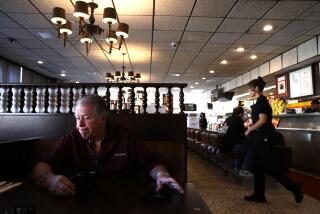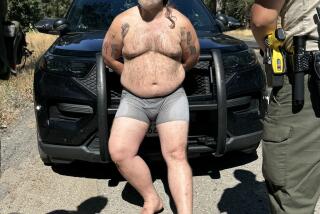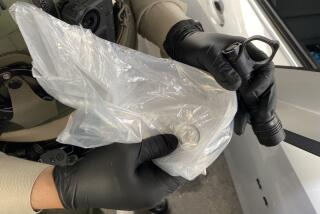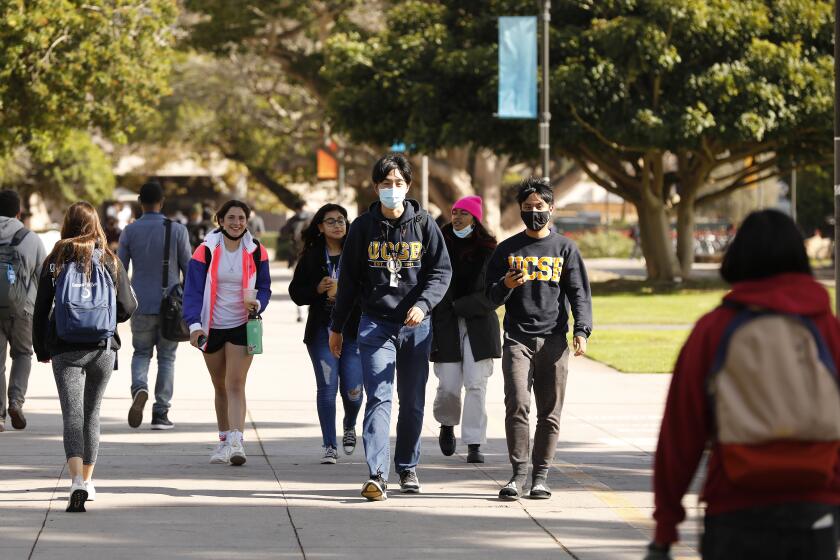Tried to Slow Boat Before Crash, Operator Testifies
Virl Earles, the Seal Beach man who drove a boat into a concrete buoy in Anaheim Bay last year, killing five of his eight passengers, testified Wednesday at his trial that he had pulled back on the throttle to slow the boat and was not driving recklessly.
Earles, who faces five counts of involuntary manslaughter, testified in Orange County Superior Court that, based on the jetty lights he saw that night, he thought he was driving in the middle of the channel and was safe from danger. His defense is that one of the lights was not working and that a temporary replacement light at another angle led him to head toward the buoy instead of through the channel.
Earles, 30, and five men and three women went out sometime after midnight Oct. 28, 1984, in a six-seat 20-foot jet boat from Peter’s Landing in Huntington Harbour to view the Queen Mary in Long Beach Harbor. Earles drove the boat into the mooring buoy just a few seconds after he entered Anaheim Bay on the return trip.
All but one of the survivors, including Earles, were seriously injured. The five killed were John Bakos, 22; Ronald Myers, 22; Anthony Sutton, 27, all of Seal Beach; Kathy Weaver, 24, of Laguna Beach, and Patricia Hulings, 20, of Downey.
Earles, who suffered a broken leg and internal injuries, is still recovering but no longer requires the wheelchair he used in the first few months after the crash.
Speeding, Recklessness Asserted
Deputy Dist. Atty. John Conley contends that Earles was driving at least 30 m.p.h. in a 5-m.p.h. zone and that he should have used extreme caution, knowing that the boat was overloaded and that there were no life jackets.
Earles’ attorney, Gary Pohlson, told the jurors that his client should not be held responsible because he was not the only one who did not see the buoy. None of the passengers yelled a warning, and none of the survivors remember seeing it.
Earles testified Wednesday he did not see the buoy. But Conley pointed out in cross-examination that Earles told federal transportation investigators that he had seen the buoy five to 10 feet away before striking it head-on.
Earles did not dispute that statement. “To me, that’s the same as not seeing it,” Earles said. “That did not allow me enough time to do anything.”
Earles did dispute how fast the boat was going when it struck the buoy and also whether his speed showed reckless disregard for nighttime conditions.
Estimate Revised
Earles told federal investigators that he had been driving about 30 m.p.h. Wednesday, however, he testified that he was not feeling well when he talked to investigators and that a more accurate recollection is that “I was going between 20 and 30, probably no more than 25.”
When Conley asked whether Earles was aware that even 25 m.p.h. is five times the speed limit, Earles countered that he had just entered the channel and was trying to slow down when the crash occurred. He also told Conley that he often had seen other boats traveling that fast from the open sea into the entry way to the bay.
“It was not my intention to go at that speed all the way in to shore,” Earles said. “I was trying to slow down.”
Conley asked Earles whether he had been concerned that he might be driving at a dangerous speed considering the darkness and the number of passengers.
Earles responded that there was much more light near the Queen Mary and that he did not realize how dark Anaheim Bay was until he began to pull back on the throttle. In regard to the overload, Earles insisted that he was in full control of the boat and that the number of passengers did not affect his driving.
Earles was the final defense witness. Final arguments in the case will not be presented until after the jurors take a boat ride in Anaheim Bay, scheduled for tonight, to look at conditions similar to those the night of the crash.
More to Read
Sign up for Essential California
The most important California stories and recommendations in your inbox every morning.
You may occasionally receive promotional content from the Los Angeles Times.





